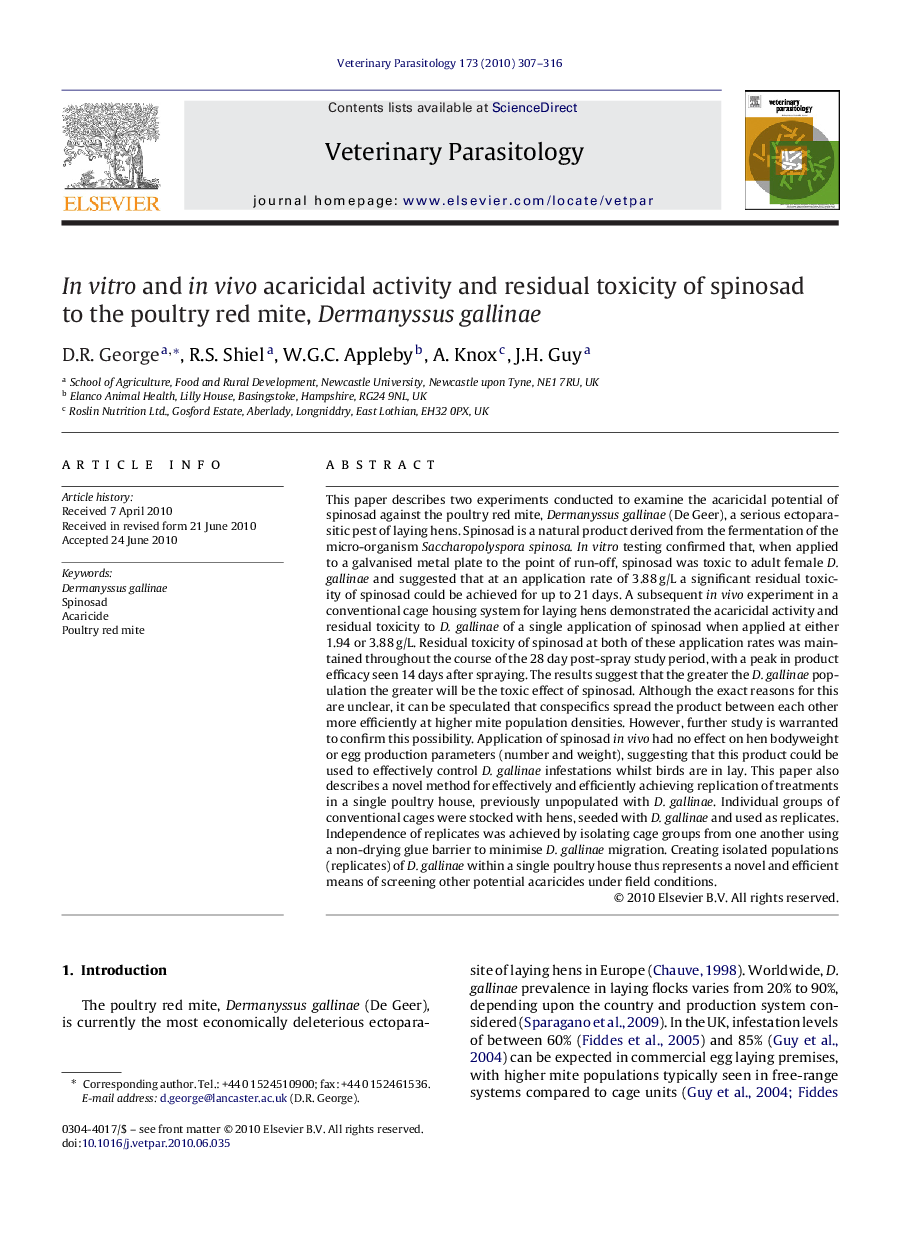| کد مقاله | کد نشریه | سال انتشار | مقاله انگلیسی | نسخه تمام متن |
|---|---|---|---|---|
| 2470583 | 1555734 | 2010 | 10 صفحه PDF | دانلود رایگان |

This paper describes two experiments conducted to examine the acaricidal potential of spinosad against the poultry red mite, Dermanyssus gallinae (De Geer), a serious ectoparasitic pest of laying hens. Spinosad is a natural product derived from the fermentation of the micro-organism Saccharopolyspora spinosa. In vitro testing confirmed that, when applied to a galvanised metal plate to the point of run-off, spinosad was toxic to adult female D. gallinae and suggested that at an application rate of 3.88 g/L a significant residual toxicity of spinosad could be achieved for up to 21 days. A subsequent in vivo experiment in a conventional cage housing system for laying hens demonstrated the acaricidal activity and residual toxicity to D. gallinae of a single application of spinosad when applied at either 1.94 or 3.88 g/L. Residual toxicity of spinosad at both of these application rates was maintained throughout the course of the 28 day post-spray study period, with a peak in product efficacy seen 14 days after spraying. The results suggest that the greater the D. gallinae population the greater will be the toxic effect of spinosad. Although the exact reasons for this are unclear, it can be speculated that conspecifics spread the product between each other more efficiently at higher mite population densities. However, further study is warranted to confirm this possibility. Application of spinosad in vivo had no effect on hen bodyweight or egg production parameters (number and weight), suggesting that this product could be used to effectively control D. gallinae infestations whilst birds are in lay. This paper also describes a novel method for effectively and efficiently achieving replication of treatments in a single poultry house, previously unpopulated with D. gallinae. Individual groups of conventional cages were stocked with hens, seeded with D. gallinae and used as replicates. Independence of replicates was achieved by isolating cage groups from one another using a non-drying glue barrier to minimise D. gallinae migration. Creating isolated populations (replicates) of D. gallinae within a single poultry house thus represents a novel and efficient means of screening other potential acaricides under field conditions.
Journal: Veterinary Parasitology - Volume 173, Issues 3–4, 29 October 2010, Pages 307–316